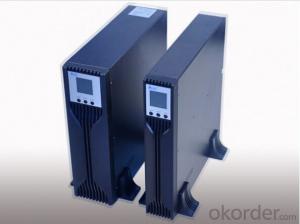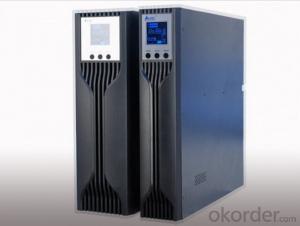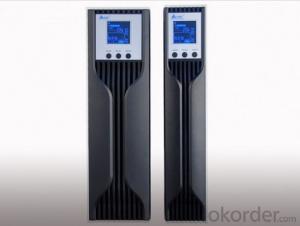6KVA Rack / Tower Puresine Wave Online Extensible G-sensor LCD UPS 1
- Loading Port:
- Guangzhou
- Payment Terms:
- TT OR LC
- Min Order Qty:
- 30 unit
- Supply Capability:
- 300000 unit/month
OKorder Service Pledge
OKorder Financial Service
You Might Also Like

| Model | RT-6KS | RT-6KL | RT-10KS | RT-10KL | ||
| Rated power | 6KVA | 10KVA | ||||
| Display | LED or LCD, depends on user's choice | |||||
| INPUT | ||||||
| Voltage | 110V:80~138VAC/220V: 120~275VAC | |||||
| Frequency | 110V:46~54Hz or 56~64Hz/220V:40~60Hz/Adjustable by software | |||||
| OUTPUT | ||||||
| Voltage | 110V:110±2%VAC/220V:220±2%VAC | |||||
| Frequency | 110V:46~64Hz/220V:46~54Hz/Same as AC(AC mode) | |||||
| 110V: 50 or 60Hz/220V:50±0.2Hz(Batt. mode) | ||||||
| Wave form | Sine wave | |||||
| BATTERY | ||||||
| QTY. & capacity of battery | 12V/7.5AH*3pcs | ————— | 2V/7.5AH*8pcs | 12V/7.5AH*8pcs | ————— | |
| Nominal DC input voltage | ————— | 36VDC | ————— | 96VDC | ————— | 96VDC |
| Transfer time | 0 ms | |||||
| Overload capability | 110%~150% for 30% seconds then transfer to bypass output, 150% above for 300 milliseconds. | |||||
| ENVIRONMENT | ||||||
| Environment of performance | Temperature 0℃~40℃, Humidity 20%~90% | |||||
| PHYSITAL | ||||||
| (kg) / Net weight (kg) | 19.5 | 110V:11.8 220V:9.1 | 38.4kg(23kg for US+55.4kg for battery pack) | 23 | ||
| (mm) / Unit dimention (mm) | 625*438*130 | 625*438*130(*2 sets, there into 1 set for battery pack) | 625*438*130 | |||
| MANAGEMENT | ||||||
| Interface | 110V:USB+RS232 220V:RJ45/11+RS232, Intelling slot selectable. | |||||

1. Wide range of input voltage
The UPS can offer normal and stable service voltage under its input voltage range. When the input voltage is out of its range the machine will switch to battery mode automatically to keep the output power in order to protect the equipment, such as computers, ensure they will not be damaged by the over high or over low voltage, users can continue the operation of equipment for a while or save the data on computers while the power network is abnormal.
2. Wide range of AVR(Automatic voltage regulation)
In the product’s input voltage range and under 3 steps of intelligent AVR function, it can provide a stable output voltage.
3. Automatic self detection when UPS on(LED).
Before the UPS on, red, yellow, blue LED will light up two times by cycle turns, after self detection UPS switch to AC mode/battery mode or working mode.
4. Silence function
In the "battery mode", shortly press the switch to turn off the buzzer. But the battery is about to run out or the load is too heavy, the buzzer sound cannot be muted.
5. Overload protection
In the battery mode, output voltage turn down correspondingly when it is overload, after the capacity of load is lower than the rated power then output voltage will back to rated value, it ensures the UPS will not shut down by abrupt overload which caused by surging current during the computer is working and other equipment is added.
6. Short circuit protection
When the mis-operation caused the load short circuit or computer failure (such as power tube breakdown of switch) cause short circuit, the UPS will shutdown automatically for protection.
7. The low current switch
This UPS adopts low current switch to extend the service life which is longer than conventional battery and high current switch in AC current path.
8. Automatic charging
There are two charging mode, charging time is faster than ordinary charging mode, higher efficiency, and greatly prolonging the service life of the battery.
9. With a bypass output
Independent bypass output socket for external printers or scanners of computer peripherals, with surge protection of the load.
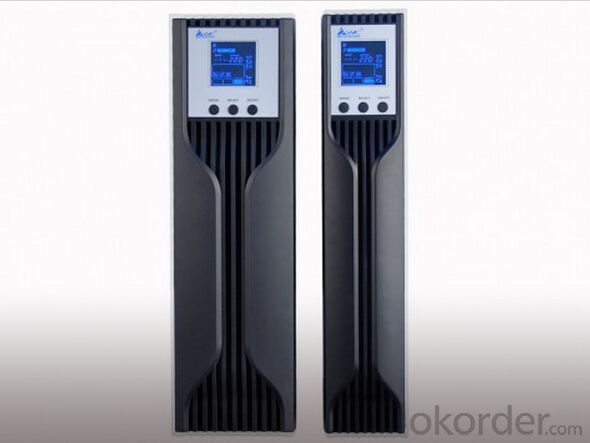
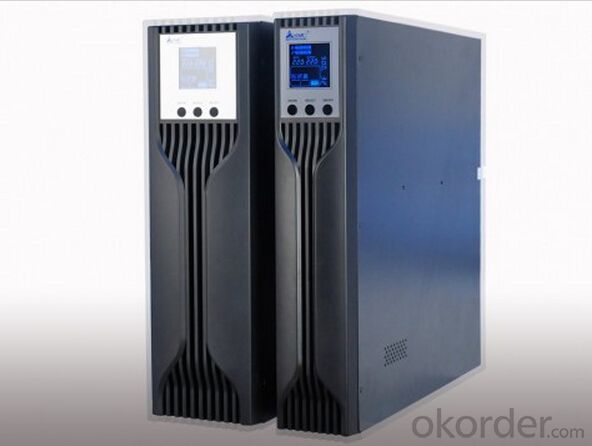
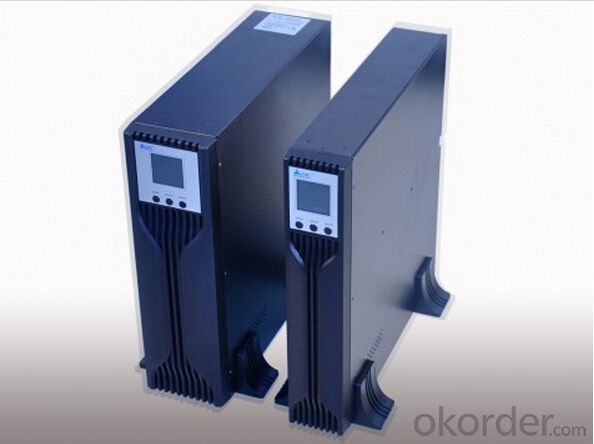
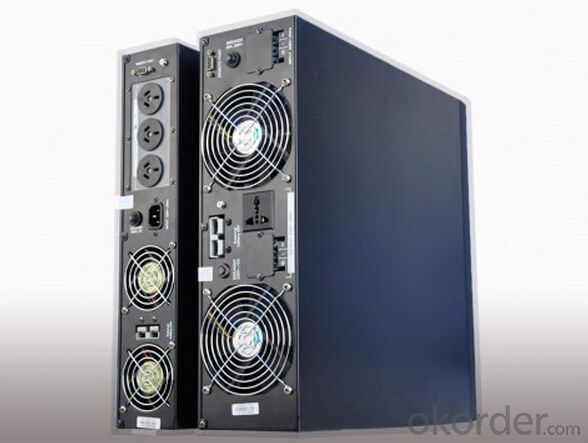

FAQ
1. Where can I buy your products?
You could find our products from dealers or contact our sales team directly. We will provide you with detailed services.
2. How to contact us?
Contact details can be found from website www.okorder.com to contact us. We look forward to providing you with professional services.
3. What is the application field of your products?
Our current GW1500~4600-SS series and GW3000~4600-DS, with the flexible expansion ability and allocation capability, can be used in the small photovoltaic (PV) grid power generation systems of family units as well as the commercial photovoltaic system such as BIPV, BAPV and etc.
4. What kinds of modules do your inventers support?
Our inventers support most of mainstream components and modules in the market. Should you require more details, please do not hesitate to contact our technical personnel.
- Q:Can a solar inverter be connected to a generator?
- Yes, a solar inverter can be connected to a generator. This connection allows the solar inverter to work in conjunction with the generator, utilizing both the solar energy and the generator power to meet the electrical requirements of a system.
- Q:How does a solar inverter protect against power surges?
- A solar inverter protects against power surges by using built-in surge protection devices such as metal oxide varistors (MOVs) or transient voltage suppressors (TVS). These devices act as a barrier, diverting excess voltage from entering the inverter and the connected solar panels. This prevents damage to the inverter and other sensitive electronic components by ensuring that the voltage stays within safe limits.
- Q:Can a solar inverter be used in a three-phase power system?
- Yes, a solar inverter can be used in a three-phase power system. In fact, three-phase solar inverters are commonly used in commercial and industrial applications where three-phase power is utilized. These inverters convert the DC power generated by solar panels into AC power that can be seamlessly integrated into the three-phase power grid.
- Q:What is the role of a solar inverter in grid management and stability?
- The role of a solar inverter in grid management and stability is to convert the direct current (DC) electricity generated by solar panels into alternating current (AC) electricity that can be fed into the grid. It ensures that the electricity generated by the solar panels is synchronized with the grid's frequency and voltage, thereby maintaining grid stability. Additionally, solar inverters can also provide grid management functionalities like reactive power control and voltage regulation, helping to balance and stabilize the overall grid system.
- Q:What is the role of a solar inverter in power quality management?
- The role of a solar inverter in power quality management is to convert the direct current (DC) generated by solar panels into alternating current (AC) that can be used to power electrical devices. Additionally, solar inverters play a crucial role in managing and maintaining the quality of power supplied to the grid, ensuring it meets the required voltage and frequency standards. They help in mitigating issues like voltage fluctuations, harmonics, and power factor imbalances, thereby improving the overall power quality and stability of the electrical system.
- Q:How does a solar inverter communicate with other devices in a solar power system?
- A solar inverter communicates with other devices in a solar power system through various communication protocols such as Wi-Fi, Ethernet, or RS485. These protocols enable the inverter to exchange data and information with devices like solar panels, batteries, energy management systems, or monitoring devices. This communication allows for real-time monitoring, control, and optimization of the solar power system's performance.
- Q:Can a solar inverter be used with a solar-powered greenhouse system?
- Yes, a solar inverter can be used with a solar-powered greenhouse system. A solar inverter converts the direct current (DC) generated by solar panels into alternating current (AC) that can be used to power electrical devices in the greenhouse system. This allows for efficient utilization of solar energy for various applications such as lighting, ventilation, irrigation, and temperature control within the greenhouse.
- Q:Can a solar inverter be used with energy storage systems?
- Yes, a solar inverter can be used with energy storage systems. In fact, it is a crucial component in connecting solar panels with energy storage batteries. The solar inverter converts the direct current (DC) electricity generated by the solar panels into alternating current (AC) electricity, which can be used to power appliances and charge the energy storage system. Additionally, the inverter also manages the flow of electricity between the solar panels, energy storage system, and the grid, ensuring efficient and reliable power supply.
- Q:What is the operating temperature range of a solar inverter?
- The operating temperature range of a solar inverter typically falls between -20°C to 50°C (-4°F to 122°F), although this can vary depending on the specific model and manufacturer.
- Q:What is the role of frequency support in a solar inverter?
- The role of frequency support in a solar inverter is to ensure that the output frequency of the inverter aligns with the grid frequency. It helps in maintaining grid stability by continuously monitoring the grid frequency and adjusting the solar inverter's output accordingly. This support is crucial in preventing frequency deviations and potential disruptions to the grid, ensuring proper integration of solar energy into the electrical system.
1. Manufacturer Overview |
|
|---|---|
| Location | |
| Year Established | |
| Annual Output Value | |
| Main Markets | |
| Company Certifications | |
2. Manufacturer Certificates |
|
|---|---|
| a) Certification Name | |
| Range | |
| Reference | |
| Validity Period | |
3. Manufacturer Capability |
|
|---|---|
| a)Trade Capacity | |
| Nearest Port | |
| Export Percentage | |
| No.of Employees in Trade Department | |
| Language Spoken: | |
| b)Factory Information | |
| Factory Size: | |
| No. of Production Lines | |
| Contract Manufacturing | |
| Product Price Range | |
Send your message to us
6KVA Rack / Tower Puresine Wave Online Extensible G-sensor LCD UPS 1
- Loading Port:
- Guangzhou
- Payment Terms:
- TT OR LC
- Min Order Qty:
- 30 unit
- Supply Capability:
- 300000 unit/month
OKorder Service Pledge
OKorder Financial Service
Similar products
New products
Hot products
Hot Searches
Related keywords
